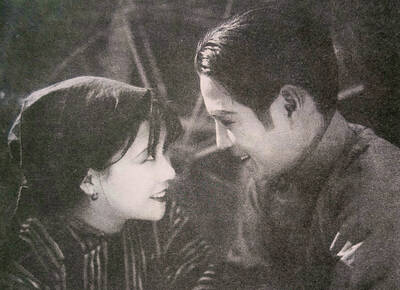"This will be his earliest memory," The Story of Edgar Sawtelle says about its title character. "Red light, morning light. High ceiling canted overhead. Lazy click of toenails on wood. Between the honey-colored slats of the crib a whiskery muzzle slides forward until its cheeks pull back and a row of dainty front teeth bare themselves in a ridiculous grin."
That’s a good way for a boy to meet a dog. It’s an even better way to get acquainted with the most enchanting debut novel of the summer. Written over a decade by the heretofore unknown David Wroblewski and arriving as a bolt from the blue, this is a great, big, mesmerizing read, audaciously envisioned as classic Americana. Absent the few dates and pop-cultural references that place the book somewhere in the post-Eisenhower 20th century, its unmannered style, emotional heft and sweeping ambition would keep it timeless.
Wroblewski happens to have borrowed, here and there, from Rudyard Kipling, William Shakespeare, Richard Russo, Stephen King and the 1934 dog-breeding book Working Dogs. And he writes as if he grew up in a library well-stocked with great novels of the prairie. But the voice heard in The Story of Edgar Sawtelle sounds like no one else’s as this book creates its enthralling, warmly idiosyncratic story.

The narrative is of course centered on Edgar, a boy who reminds himself of Kipling’s Mowgli (from The Jungle Book) in his uncanny ability to communicate with dogs. Dog breeding is the family avocation. In the Sawtelles’ remote Wisconsin kennel, “they had photographs of every dog they’d ever raised but none of themselves.”
Wroblewski puts Edgar on a warm, cozy, paw-boxing basis with the Sawtelle dogs by rendering the boy mute from birth. Although Edgar’s condition is a terrible liability at certain crucial plot junctures, it is more often a blessing. Edgar speaks his own private sign language to people and dogs alike. He has no trouble making himself understood to his loved ones, whether they have two legs or four.
And Wroblewski has a deft, natural way of conveying Edgar’s relationship to language. Edgar speaks as clearly as any of the book’s other human characters do. It’s just that his dialogue, unlike theirs, is presented without quotation marks. Within the Sawtelle household, Edgar is by far the easiest person to understand.
That’s because Wroblewski gives this family the Hamlet treatment, in general terms though not slavishly derivative ones. Edgar adores his mother, Trudy, and resents his long-lost uncle, Claude. When an unhappy fate befalls Edgar’s father, Gar, the suspicions of this now 14-year-old boy are aroused. Trouble ensues. But The Story of Edgar Sawtelle is by no means Hamlet with hounds. This book’s brief encounters with prophecy and the supernatural have as much to do with King’s Maine as they do with Shakespeare’s Denmark.
In a book that pays rapt attention to the power of communication, there are things that Edgar at first simply cannot understand. His parents are beguiling but mysterious. (The only answer Edgar can get to the question of how they met is: “In a good way. You’d only be disappointed in the details.”)
One of Wroblewski’s most impressive accomplishments here is to exert a strong, seemingly effortless gravitational pull. The reader who has no interest in dogs, boys or Oedipal conflicts of the north woods of Wisconsin will nonetheless find these things irresistible.
Even when he more openly manipulates his characters, this fine new author (who, in another life, has a career developing software) invests their actions with intense emotion. When the dogs make a home for themselves in a new place, they do it with heart and soul.
“As they worked, they put the sky in place above, the trees in the ground,” the book says, describing one of Edgar’s training sessions. “They invented color and air and scent and gravity.” And in a touch that is by no means unexpected, once Wroblewski’s world has been entered and embraced, this book’s saddest farewell ends a profound man-dog relationship. Not even Hamlet could have imagined the strength of their loyalty or the depths of their sorrow.

On a hillside overlooking Taichung are the remains of a village that never was. Half-formed houses abandoned by investors are slowly succumbing to the elements. Empty, save for the occasional explorer. Taiwan is full of these places. Factories, malls, hospitals, amusement parks, breweries, housing — all facing an unplanned but inevitable obsolescence. Urbex, short for urban exploration, is the practice of exploring and often photographing abandoned and derelict buildings. Many urban explorers choose not to disclose the locations of the sites, as a way of preserving the structures and preventing vandalism or looting. For artist and professor at NTNU and Taipei

March 10 to March 16 Although it failed to become popular, March of the Black Cats (烏貓進行曲) was the first Taiwanese record to have “pop song” printed on the label. Released in March 1929 under Eagle Records, a subsidiary of the Japanese-owned Columbia Records, the Hoklo (commonly known as Taiwanese) lyrics followed the traditional seven characters per verse of Taiwanese opera, but the instrumentation was Western, performed by Eagle’s in-house orchestra. The singer was entertainer Chiu-chan (秋蟾). In fact, a cover of a Xiamen folk song by Chiu-chan released around the same time, Plum Widow Missing Her Husband (雪梅思君), enjoyed more

Last week Elbridge Colby, US President Donald Trump’s nominee for under secretary of defense for policy, a key advisory position, said in his Senate confirmation hearing that Taiwan defense spending should be 10 percent of GDP “at least something in that ballpark, really focused on their defense.” He added: “So we need to properly incentivize them.” Much commentary focused on the 10 percent figure, and rightly so. Colby is not wrong in one respect — Taiwan does need to spend more. But the steady escalation in the proportion of GDP from 3 percent to 5 percent to 10 percent that advocates

From insomniacs to party-goers, doting couples, tired paramedics and Johannesburg’s golden youth, The Pantry, a petrol station doubling as a gourmet deli, has become unmissable on the nightlife scene of South Africa’s biggest city. Open 24 hours a day, the establishment which opened three years ago is a haven for revelers looking for a midnight snack to sober up after the bars and nightclubs close at 2am or 5am. “Believe me, we see it all here,” sighs a cashier. Before the curtains open on Johannesburg’s infamous party scene, the evening gets off to a gentle start. On a Friday at around 6pm,